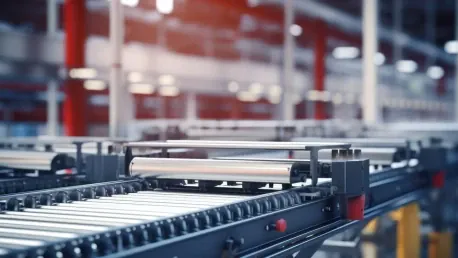In the face of recent tariff declarations affecting imports from Canada, Mexico, and China, the packaging industry finds itself at a crossroads. Executives from leading packaging companies have shared their insights on the challenges and strategies amid potential trade wars during various earnings calls in recent weeks. As market demands and costs shift, the industry’s resilience and adaptability are put to the test.
Proactive Measures and Regional Production
Setting Up War Rooms
Faced with the uncertain landscape shaped by new tariffs, packaging companies are taking proactive measures to navigate the complexities. Graphics Packaging International (GPI) CEO Michael Doss noted that customers have been setting up “war rooms” to strategize and assess the impacts of these tariffs. These war rooms function as hubs for rapid decision-making, allowing companies to dynamically adjust their operations and mitigate immediate challenges.
This proactive stance is a testament to the industry’s agility in responding to external pressures. The war rooms not only facilitate immediate responses but also enable long-term strategic planning. Many companies are leveraging data analytics and market insights to forecast potential tariff scenarios and prepare accordingly. This preparation includes adjusting supply chains, exploring alternative sourcing options, and optimizing logistics to reduce dependency on affected imports.
Domestic Production Capacities
O-I Glass CEO Gordon Hardie emphasized the importance of extensive domestic production capabilities in mitigating tariff-related disruptions. Companies with strong domestic manufacturing infrastructure are better positioned to absorb the shocks of increased tariffs on imported goods. This approach ensures that production remains uninterrupted and that costs stay manageable, even if cross-border transactions become less viable.
Domestic production capabilities also allow companies to quickly pivot to meet local demand, reducing reliance on international supply chains. This shift not only stabilizes the production process but also enhances the companies’ responsiveness to market fluctuations. Additionally, local production can foster stronger relationships with regional suppliers and distributors, creating a more resilient and interconnected supply chain network.
Diversifying Market Presence and Mitigating Costs
Exploring Alternative Markets
As companies brace for potential shifts in import dynamics, there is a notable trend towards diversifying market presence. O-I Glass, for instance, is expanding its footprint in alternative markets like Latin America and Europe. By strengthening ties in these regions, O-I aims to mitigate the risks associated with tariffs on traditional trade partners. This diversification strategy ensures that the company is not overly reliant on any single market, thereby spreading risk and creating new growth opportunities.
This move to alternative markets is not without its challenges, as companies must navigate varying regulatory environments, cultural nuances, and logistical complexities. However, the potential rewards of accessing new customer bases and entering emerging markets can outweigh these hurdles. Diversification also positions companies as global players, enhancing their brand reputation and increasing their competitive advantage on the world stage.
Regionalization and Cost Pass-Through
Amcor’s CEO Peter Konieczny highlights the firm’s efforts in regionalization and cost pass-through to buffer against potential tariff-induced costs. Regionalization involves decentralizing operations and establishing production bases closer to key markets, thus minimizing the risks associated with long-distance transportation and import tariffs. This strategic redistribution of manufacturing sites enhances efficiency and reduces the overall cost footprint.
Cost pass-through mechanisms, where increased costs are passed on to the customers, also play a crucial role in maintaining financial stability. While this might initially lead to higher prices for consumers, it ensures that companies can sustain their profit margins and continue to invest in innovation and quality improvement. Transparency in communicating these cost changes to customers is essential, as it helps maintain trust and fosters long-term partnerships.
Addressing Consumer Behavior and Economic Implications
Concerns About Consumer Purchasing Power
One of the more understated yet significant concerns related to tariffs is their impact on consumer behavior. Both Ball CEO Dan Fisher and Crown CEO Tim Donahue have expressed worries about how rising prices, a direct consequence of tariffs, could dampen consumer purchasing power. Higher prices can lead consumers to cut back on purchases or shift preferences away from packaged goods, directly affecting the demand for packaging.
This potential decrease in demand underscores the importance of closely monitoring consumer trends and adjusting marketing strategies accordingly. Companies may need to innovate in terms of product offerings, focusing on adding value to justify higher prices. They may also explore cost-saving measures internally to absorb some of the tariff-induced expenses, minimizing the financial burden placed on consumers.
Broad Economic Consequences
The broader economic implications of tariffs extend beyond immediate price hikes and consumer behavior. The industry must also consider the potential ripple effects on employment, investment, and overall economic growth. Tariff fluctuations can lead to uncertainty in business environments, causing companies to delay or reduce investments in new projects or innovations. This hesitation can slow down the pace of industry advancement and impact long-term strategic goals.
Moreover, changes in trade policies can influence global economic stability, affecting currency exchange rates and international partnerships. Packaging companies must remain vigilant and adaptable, continuously reassessing their strategies to navigate these broader economic conditions effectively. Building robust contingency plans and fostering collaborative partnerships with stakeholders can provide the necessary agility to thrive in an unpredictable economic landscape.
Navigating the Future with Strategic Positioning
Adapting to Trade Policy Environment
In summary, packaging executives are navigating a complex and fluctuating trade policy environment with cautious optimism. Their strategies involve leveraging domestic production capabilities, diversifying market presence, and implementing regionalization efforts. These measures not only mitigate the direct impacts of tariffs but also enhance the industry’s resilience.
While concerns about the indirect consequences on consumer behavior and broader economic implications persist, the overarching trend is clear: strong supply chains and localized production strategies are vital. These approaches enable companies to stay agile amid uncertainties and capitalize on emerging market opportunities. The industry’s ability to adapt and innovate will be crucial in weathering potential trade disruptions and maintaining growth trajectories.
Future Considerations and Strategic Insights
Faced with recent tariff declarations impacting imports from Canada, Mexico, and China, the packaging industry stands at a crucial juncture. Leading executives from top packaging firms have shared their perspectives on the challenges and strategies they’re employing amid potential trade wars during earnings calls in recent weeks. These tariffs have led to a significant shift in market demands and cost structures, testing the industry’s resilience and ability to adapt.
Companies are being pushed to re-evaluate their supply chains and explore alternative sourcing options to mitigate the impact of higher costs on their operations and customers. Innovation is becoming a key focus, as firms look for new materials and technologies to keep their products competitive in a fluctuating market. Additionally, there’s a growing emphasis on boosting efficiency and reducing waste to absorb additional costs.
As the trade landscape continues to evolve, the packaging industry must remain agile, leveraging strategic planning and robust contingency measures to navigate these tumultuous times effectively.









